 |
 |
 |
 |
 |
 |
 |
 |
 |
 |
 |
 |
 |
 |
 |
 |
 |
 |
 |
 |
 |
 |
 |
 |
 |
 |
 |
 |
 |
 |
 |
 |
 |
 |
 |
 |
 |
 |
 |
 |
 |
 |
 |
 |
 |
 |
 |
 |
 |
 |
 |
 |
 |
 |
 |
 |
 |
 |
 |
 |
 |
 |
 |
|
|
|
|
|
|
|
|
|
|
|
|
|
|
|
|
|
|
|
|
|
|
|
|
|
|
|
|
|
|
|
|
|
|
|
|
|
|
|
|
|
|
|
|
|
|
|
|
|
|
|
|
|
|
|
|
|
|
|
|
|
|
|
|
|
|
|
|
|
|
|
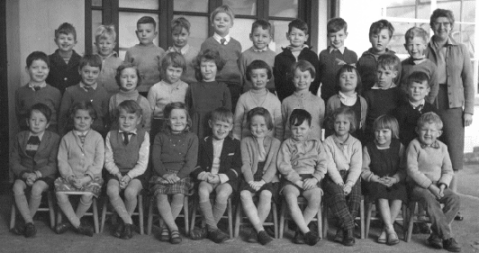 |
|
|
|
|
|
|
|
|
|
Many boys in England wore shorts at the beginning of the 60s only one boy here has long trousers and he had moved from Canada. Shorts were worn with knee socks. Shorts on even older boys were still common at the beginning of the 60s. Parents were, however, beginning to discuss whether boys should wear shorts, even in the winter. This style passed to younger and younger boys as the decade progressed.
By the end of the 60s few British boys over 11 still wore shorts suits, although many boys, even some in the first years of their secondary school wore shorts. Mum remembers one or two boys still wore shorts in the 3rd form ( year 9 ) though most people thought their parents odd to make them, caps were no longer worn. Dad wore long trousers all through secondary school.
|
|
|
|
|
|
|
|
|
|
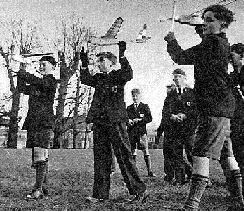 |
|
|
|
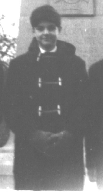 |
|
|
|
|
|
|
|
|
|
Uncle Graham in
his Duffle Coat
|
|
|
|
|
|
|
|
|
|
|
|
|
|
|
|
|
|
|
|
|
|
|
|
|
|
|
|
|
|
|
|
|
|
|
|
|
|
|
|
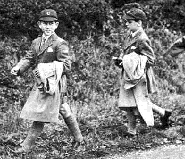 |
|
|
|
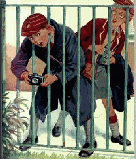 |
|
|
|
|
|
|
|
|
|
Some private schools still made all their boys to wear shorts like Prince Charles
|
|
|
|
|
|
|
|
|
|
|
|
|
|
|
|
|
|
|
|
|
|
|
|
|
|
|
|
|
|
|
Casual clothes
More and more British boys wanted to dress like American boys and wear jeans though not all could afford them. Cords were popular and cord shorts still worn. T shirts were worn and clothes became more colourful.
|
|
|
|
|
|
|
|
|
|
 |
|
|
|
|
|
|
|
|
 |
|
|
|
|
|
|
|
|
|
|
|
|
|
|
|
|
|
|
|
|
|
|
|
|
|
|
|
|
Small boys wore denim bib and brace shorts, polo shirts, ankle or knee socks (usually plain grey, oatmeal, or white).
Miniature 'Beatle suit' and a pair of 'winkle picker' boots could be bought too.
Tight jeans continued to be popular with teenagers.
The influence that had undoubtedly introduced jeans to small boys was the cinema and TV, particularly cowboy films.
Jeans became a symbol of young people rejecting the older generation's ideals.
|
|
|
|
|
|
|
|
|
|
|
|
The Beatles 1964
The Beatles encouraged the adoption of more casual, colourful clothes which could be identified with a teenage style of dress quite unlike the clothes of their parents.
The Beatles were very popular following their early hit records in l962~3, and their influence considerable. Their haircuts were considered unconventional at the time and shocked older generations. Not only was the hair grown longer but it completely covered the forehead and ears in a long, thick fringe which seemed quite barbaric to older men used to the established 'short back and sides' haircut which had been worn since the beginning of the century).
|
|
|
|
|
|
|
|
|
|
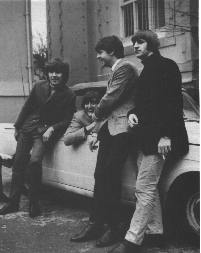 |
|
|
|
|
|
The Beatles are wearing very tight, narrow jeans (first associated with the Teddy Boys in the 1950s). Jeans were still controversial wear for the young. In 1963 a vicar had banned boys who wore jeans from his youth club, describing a jeans-wearer as a person 'whose morals are practically non-existent' (Daily Mirror, 5 June 1963).
Two of the Beatles wear casual, loose-fitting, roll-necked sweaters rejecting the conventional shirt collar and tie still worn by Paul McCartney (centre). Two articles of dress which were popularly associated with the Beatles at this date were the short, collarless jacket and the elastic-sided 'Chelsea' boot.
Young protesters and hippies adopted blue jeans and Psychedelic colors and patterns adorned their tie-dyed and hand-painted garments.
|
|
|
|
|
|
|
|
|
|
|
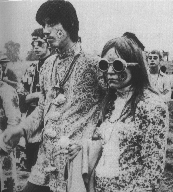 |
|
|
|
|
|
|
|
|
|
|
|
|
|
|
|
|
|
|
|
|
|
|
|
|
|
The 1960s were the first decade that had its own fashions directed specifically at teenagers. Before the Sixties, teenagers dressed like basically scaled-down versions of their parents as soon as they outgrew juvenile styles. Some teenagers were known as Teddy boys, Rockers and Beatniks wore unusual clothes but most teenagers dressed like their parents until the middle of the 60s when more youngsters were influenced by the Mods and the fashion industry began.
Some of the Teddyboys became Rockers who liked the same music and rode powerful British motorcycles. Teds and Rockers got on well with each other and the leather motorbike jacket became the normal wear for many Teddyboys and Teddygirls for daytime use and for rough pubs. The bike jacket could protect against motorcycle accidents in a way that the drape jacket never could.
|
|
|
|
|
|
|
|
|
|
 |
|
|
|
|
|
|
|
|
|
|
|
|
|
 |
|
|
|
|
|
|
|
|
|
Other teenagers became Mods they despised the Brylcreamed Teddy Boys and adopted European fashions .They wore Italian-style suits, drank espresso coffee and worshipped the lambretta scooter as their preferred style of transport, they took an enormous amount of pride in their appearance. They wore Italian rounded-collar shirts; short three-button jackets; no turn-up narrow trousers and pointed-toe shoes for the boys
The College Boy style was very simple and classy and versions of it are still worn today. College Boys wore a crew cut hair-do, proper trousers, Fred Perry tennis shirts, military parkas, suede shoes and light make-up. The Fred Perry shirt is still very popular to this day among rudies, skinheads and revivalist Mods. It is a basic tennis shirt named after Fred Perry, winner of 11 Wimbledon championships in the 1930's. The shirts sport a golden laurel wreath on the breast. The College Boy style was considered a very Italian look which went well with their scooters.
|
|
|
|
|
|
|
|
|
|
|
|
|
|
Brighton was taken over by angry mobs of "Mods and Rockers" during Bank Holidays. They would take over the seaside resort to party at clubs and battle on the beach. After a good day's fight with the Mods using small hammers and the rockers using torn apart chairs, they would riot in the streets and vandalize the shops.
|
|
|
|
|
|
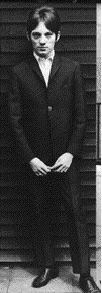 |
|
|
|
|
|
|
|
|
|
|
|
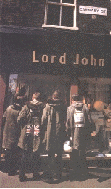 |
|
 |
|
|
|
|
|
|
|
|
|
|
|
|
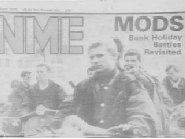 |
|
|
|
|
|
|
|
|
|
|
|
|
|
|
|
|
|
|
Younger boys, soon followed all these influences and new fashions soon appeared even in junior schools. Boys and girls rejected the "nice" traditional clothes desired by their parents. Boys wanted the tie-dyed shirts, fatigues, and jeans as worn by the teenagers. Short began to disappear. This was especially true in America, but the process was also notable in Europe.
Men and boys of all ages felt free to grow their hair long and wear colorful prints, leisure suits, and safari jackets. Parents and schools at first resisted, but by the end of the decade, long hair for boys had become increasingly common.
Almost all fabrics we know of today were available.
|
|
|
|
|
|
|
|
|
|
|
|
Scouts
Eventually, in 1967 Scouts went to long trousers, further influencing the trend away from shorts.
By the 1960s British schoolboys were abandoning short trousers at the age of 11 or 12, instead of 14 as had previously been the case, and felt awkward having to wear shorts as scouts. There were also complaints about the unsuitability of the uniform for a British winter., it was decided to institute radical changes in the traditional scout uniform.
|
|
|
|
|
|
|
|
|
 |
|
|
|
|
|
|
|
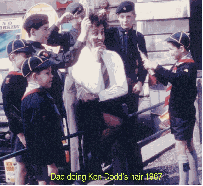 |
|
|
|
|
|
|
|
The scout's shorts were replaced by fawn-coloured long trousers and the short-sleeved khaki shirt superseded by a long-sleeved dark green shirt. Just the beret, belt and scarf were retained from the time-honoured uniform of old. Recent years have seen further innovations in the scout uniform, with a general relaxation of dress regulations and the introduction of sweatshirts for some activities.
|
|
|
|
|
|
|
|
|
|
|
|
|
|
|
|
|
|
|
|
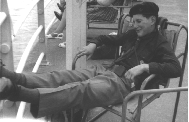 |
|
|
|
|
|
|
|
|
|
|
|
|
|
|
|
|
|
|
|
|
|
|
|
|
|
|
|
|
|
|
|



































